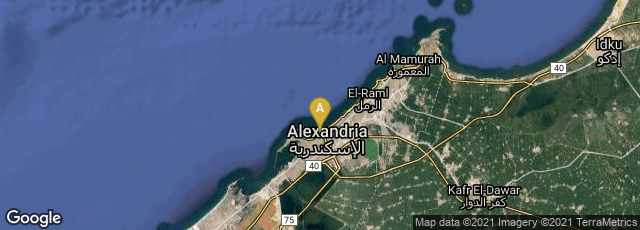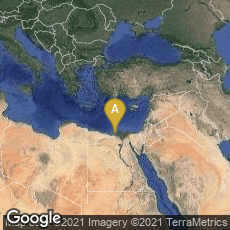

A: Alexandria Governorate, Egypt
The Vatican Euclid (Vat. gr. 190, called P), a version of the Greek text dating from the ninth century, and excluding the addendum to the final proposition of book VI by the fourth century editor, Theon of Alexandria, has been called "the single most important manuscript of the Elements" (N. M. Swerlow, "The Recovery of the Exact Sciences of Antiquity: Mathematics, Astronomy, Geography," Grafton (ed.) Rome Reborn. The Vatican Library and Renaissance Culture (1993) 128-29 & plates 101-102).
"The event, however, that had the most enduring effect within the Greek phase of the transmission of the Elements was the edition and slight emendation it underwent at the hands of Theon of Alexandria (fourth century; not to be confused with the second century Neoplatonist, Theon of Smyrna). The result of Theon's efforts furnished the text for every Greek edition of Euclid until the nineteenth century. Fortunately, in his commentary to Ptolemy's Almagest, Theon indicates that he was responsible for an addendum to the final proposition of book VI in his 'edition (ekdosis) of the Elements'; for it was this confession that furnished scholars with their first clue in unraveling the problem of the pre-Theonine, 'pristine' Euclid. In 1808 François Peyrard noted that a Vatican manuscript (Vat. graec. 190) which Napoleon had appropriated for Paris did not contain the addition Theon had referred to. This, coupled with other notable differences from the usual Theonine editions of the Elements, led Peyrard to conclude that he had before him a more ancient version of Euclid's text. Accordingly, he employed the Vatican codex, as well as several others, in correcting the text presented by the editio princeps of Simon Grynaeus (Basel, 1533). Others, utilizing occasional additional (but always Theonine) manuscripts or earlier editions, continued to improve Peyrard's text, but it was not until J. L. Heiberg began the reconstruction of the text anew on the basis of the Vatican and almost all other known manuscripts that a critical edition of Elements was finally (1883-1888) established. Heiberg not only in great measure succeeded in getting behind the numerous Theonine alterations and additions, but also was able to sift out a considerable number of pre-Theonine interpolations. In addition to the authority of the non-Theonine Vatican manuscript, he culled papyri framents, scholia, and every known ancient quotation of, or reference to, the Elements for evidence in his construction of the 'original' Euclid. The result still stands" (John Murdoch, "Euclid: Transmission of the Elements," Dictionary of Scientific Biography IV [1971] 437-38).